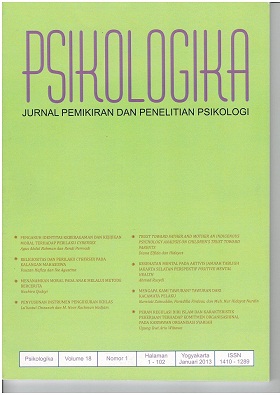Main Article Content
Abstract
Children are the future generation. In the hands of children that the future of this nation are, so the children are the most valuable heritage that must be guarded carefully. But in fact, there are many reported cases of crime committed by children themselves. This suggests looking increasingly less moral values held by a child during its development. Daradjat (1977) explains that moral decline is not only experienced by adults only, but also the moral decline has spread to the young people, children and adolescents. Therefore, it is understood that it is important to provide moral education from an early age in children. However, teach and instill morals in children is not an easy matter. Moral is a concept that tends to the abstract, given moral is talk about the values that are abstract concepts. Basically, an abstract concept that is not easily understood by children who have a tendency to think things concretely. Therefore it takes a certain techniques and methods that can be done in introducing and instill morals in children, one of which is story telling. Conclusion, to introduce and instill moral values in children can be done by using the method of story telling in the delivery process, so that children find it easier to understand moral concepts. The efforts can be made for story telling method can be optimal in giving an understanding of moral values in children, namely with the development of methods of story telling, considering the characteristics of listeners, and view messages in the story.
Keywords: moral reasoning, children, story telling
Article Details
Authors who publish with this journal agree to the following terms:
- Authors retain copyright and grant the journal right of first publication with the work simultaneously licensed under a Creative Commons Attribution-ShareAlike 4.0 International License that allows others to share the work with an acknowledgment of the work's authorship and initial publication in this journal.
- Authors are able to enter into separate, additional contractual arrangements for the non-exclusive distribution of the journal's published version of the work (e.g., post it to an institutional repository or publish it in a book), with an acknowledgment of its initial publication in this journal.
- Authors are permitted and encouraged to post their work online (e.g., in institutional repositories or on their website) prior to and during the submission process, as it can lead to productive exchanges, as well as earlier and greater citation of published work (See The Effect of Open Access).




